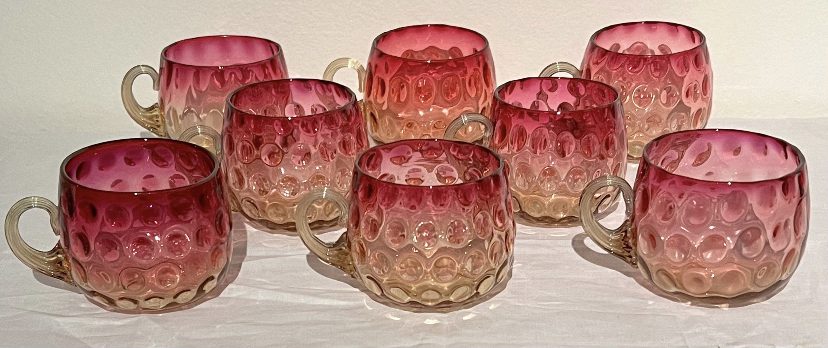
Even if you’re unfamiliar with the name, you’ve likely seen a piece of amberina art glass at some point in your search for collectible glass. Amberina glass is a beautifully colored glass that is sure to attract attention.
Amberina glass is a pleasing blend of deep ruby red color on top that fades into a pale amber shade on the bottom. Reverse amberina glass has the amber shade on top and a deep ruby red on the bottom, and there are blue versions known as blue amberina or bluerina.
Amberina glass has a fascinating, lengthy history that you’ll want to be familiar with before searching for authentic amberina glass. Let’s explore what you should know about this distinctive collectible glass featuring the colors of a sunset!
What is Amberina Art Glass?
Amberina glass is part glass and part metal. It is created from a base of lead with a bit of gold added to the glass and the color gradation is created by reheating techniques. This glass was created as blown glass that was blown in molds depending on the design. Some pieces are not produced in molds.
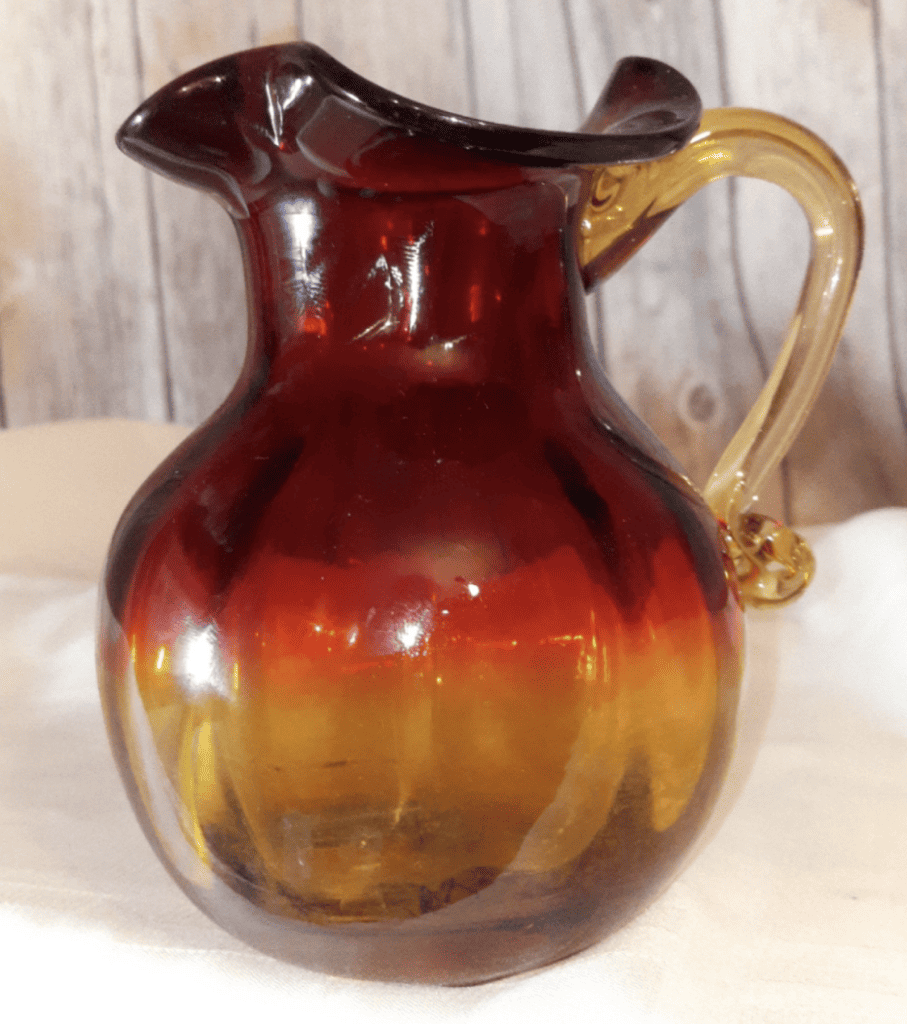
It is also important to note that the amberina technique is often cheaply duplicated with the amber/ruby color “flashed” on, which is a technique that involves basically painting the ruby color onto clear glass. Over time, this coating will begin to chip and flake off the piece, revealing the clear glass underneath.
However, some of the painted amberina pieces will not have the flaking of flashed on pieces. These pieces are created using copper oxide and yellow ochre in the firing process, then painted and reheated to create the ruby coloring. These pieces will have a shimmering finish.
Bluerina is created using a similar technique and is created by manipulating the temperature of the glass. Some bluerina glass fades into various shades of blue while other pieces showcase a unique combination of a blue to amber fade which is both stunning and unusual.
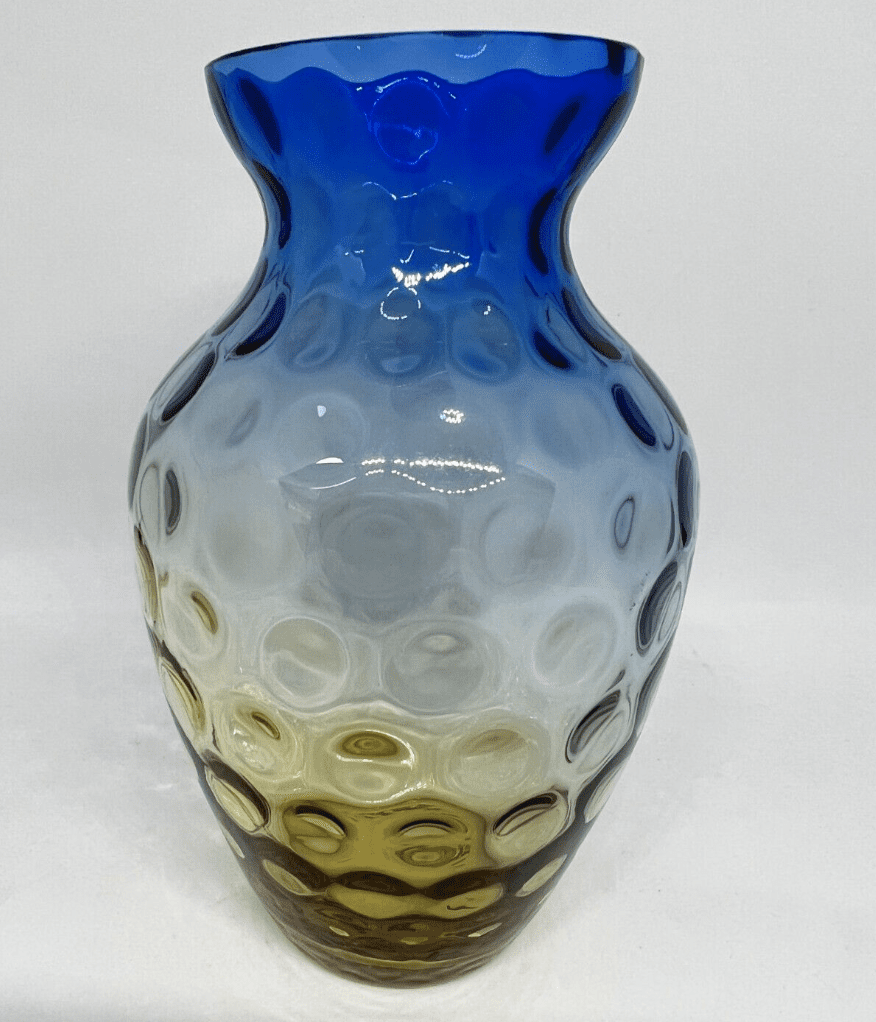
Newer amberina art glass is created using selenium or iron instead of gold that was used in the older, original amberina. This produces a much brighter, bolder piece of amberina whereas “old” amberina is typically more muted in color. Using these materials instead of gold is also a much cheaper option for glass manufacturers.
Where is Amberina Glass from and Who Made Amberina Glass?
Original amberina glass was produced from 1883 to the 1890s in both East Cambridge, Massachusetts and Toledo, Ohio. This glass is actually a patented glass technique and was produced at the New England Glass Company in Cambridge. Eventually in 1888, New England Glass Company moved to Toledo, Ohio and then was renamed the W.L. Libbey & Son Glass Company, and they continued to produce amberina glass.
Amberina glass was also produced at Mount Washington Glass Company in New Bedford, Massachusetts during the early 1880s under a different name: rose amber glass. The then New England Glass Company and Mount Washington Glass Company were involved in a dispute about patents.
The dispute was not resolved; therefore, Mount Washington Glass chose to call their product a different name. Eventually, an injunction was granted in 1886 and Mount Washington had to discontinue making the glass. Evidence suggests that Mount Washington made their version of amberina long before New England Glass Company but did not apply for a patent.
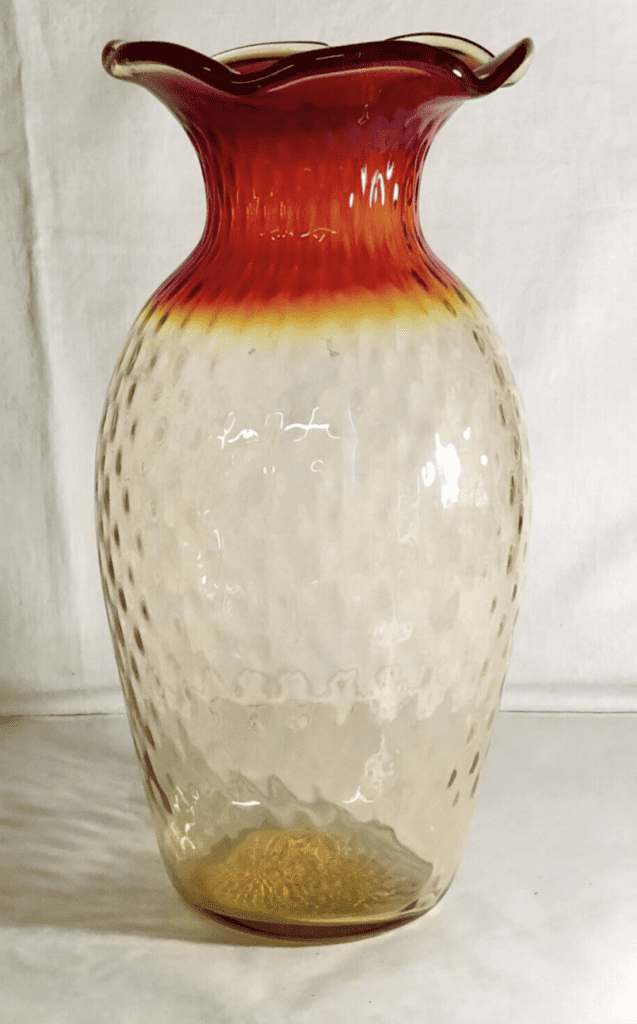
New England Glass Company/W.L. Libbey & Son Glass Company produces glass to this day, but you will recognize them as Libbey Incorporated. It was purchased in 1935 and renamed Libbey-Owens-Ford and was then a division of the Owens-Illinois glass company until 1993 when it became an independent company once more. Libbey now has a family of brands throughout the world. Sadly, they do not continue to produce amberina colored glass.
As for Mount Washington Glass Company, they became a division of Pairpoint Manufacturing and are no longer in existence. They were considered the largest producer of American Victorian glass and also created other innovative glass techniques and colors. Mount Washington glass is highly collectible, and because of age, their pieces are an extremely rare find and coveted by collectors.
Did Fenton Make Amberina Glass?
Fenton did make their own version of amberina, as did other glass manufacturers. Amberina experienced a resurgence in popularity during the 1950s and 1960s, and this was when many companies because producing their own versions of it, known as “new” amberina. Fenton called their amberina glass Colonial Orange.
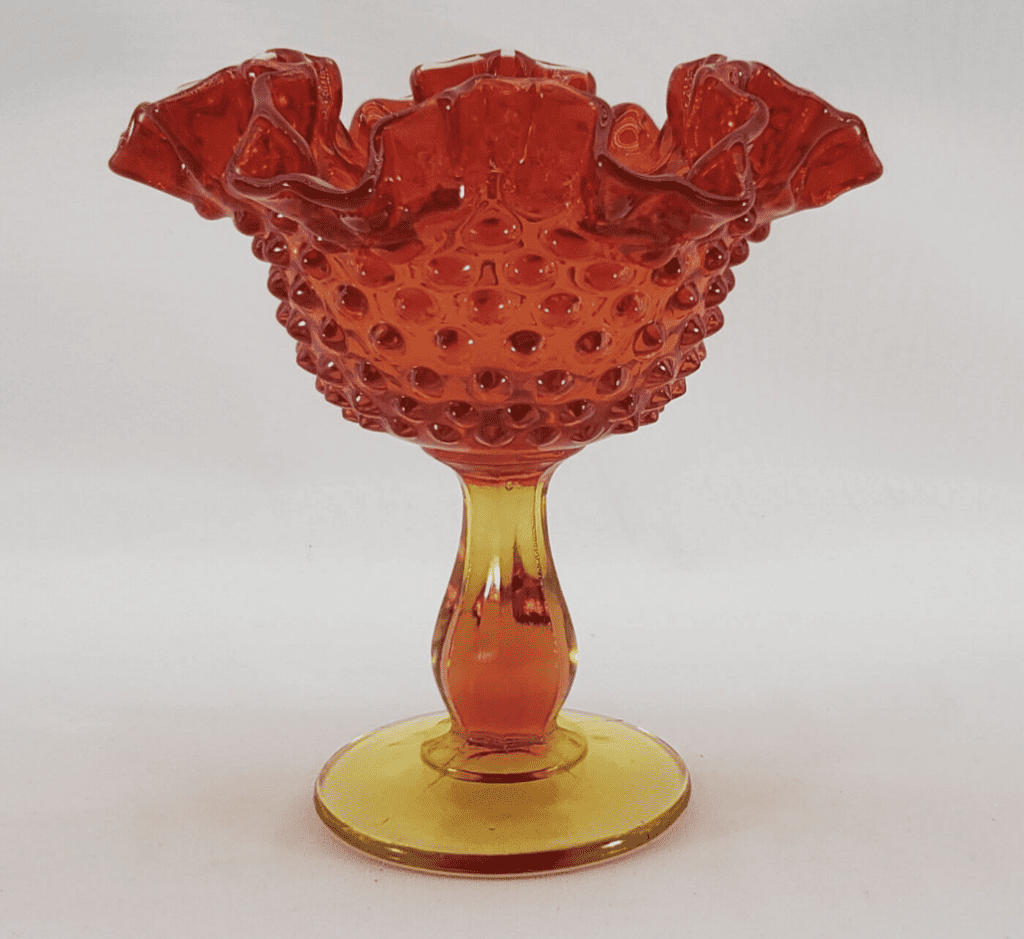
luvinshabby
It doesn’t appear that Fenton made bluerina or blue amberina glass pieces. Fenton also created pieces in an amber color that did not have any gradation of color. This shade is not to be confused with amberina as it is an almost pale, light golden-brown color.
Over the years, multiple companies have produced amberina glass such as Baccarat and others. Blenko refers to their amberina as tangerine, and Imperial Glass Company also created amberina pieces by other names.
How Old is Amberina Glass?
Amberina glass (known as original amberina) was produced in the late 1880s and 1890s and therefore is around 130 years old. “New amberina” glass produced in the 1950’s to 1960’s is roughly 60-70 years old. There was a renewed interest in amberina colored glass during the mid-20th century, although these pieces are much brighter and bolder in color than their predecessors.
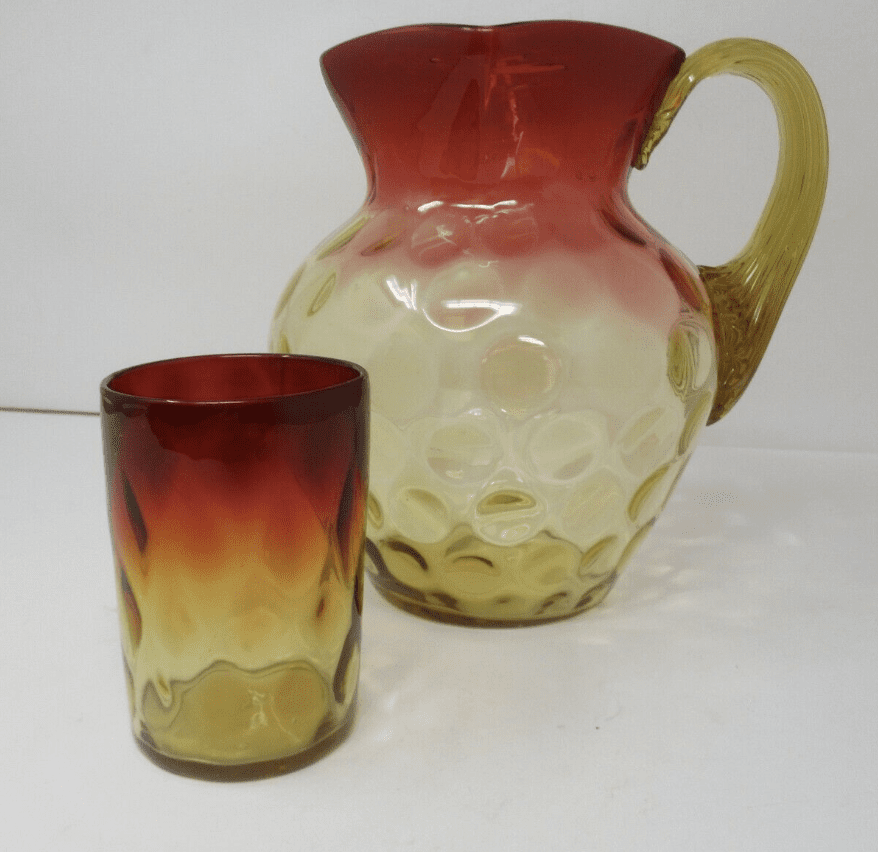
There are still newer amberina pieces being manufactured by glass companies such as Blenko. While these pieces may not be known as amberina (sold under another name), they can be determined by the appearance if it is amberina glass. The best way to determine age is to compare labels (if any), special designs (such as limited-edition pieces or pieces produced in certain molds for a specific period of time), and information from credible resources and professionals to help you determine when your piece was created.
Check out our full article for more information on identifying authentic amberina glass.
SOURCES
https://libbey.com/brand-family/
https://en.wikipedia.org/wiki/Libbey_Incorporated
https://www.glassencyclopedia.com/amberinaglass.html
https://www.britannica.com/art/amberina-glass
https://ninelivesantiques.com/2010/08/02/amberina-glass/https://en.wikipedia.org/wiki/Amberina#:~:text=Amberina%20is%20a%20type%20of,%2C%20Ohio%2C%20into%20the%201890s

